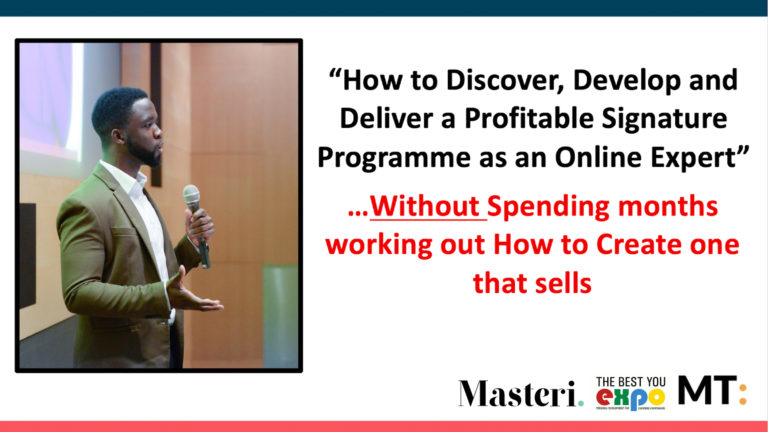The Marketing Research Process for Personal Brands
Every business owner needs to go through a marketing research process. This is so that they can understand their market and define any opportunity gaps that they can capitalize on. Without the right sort of marketing research process, you will find it hard to engage with your audience. In addition, it becomes more expensive because, as you will not know how to target your audience efficiently. This article is going to highlight the process required to employ the right marketing strategy.
To do this well, you need to first define your strongest credentials. This can be done via self-reflection or asking your friends and family. Once you have chosen your strongest credentials you need to see if it is marketable. You need to discover an audience that needs your skills to solve their biggest perceived problems. All of this can be discovered via the internet, surveys, social media and face-to-face interviews. Finally, you need to collate this information in a way that can be used in your marketing process.
1. Define your strengths
When starting as a personal brand online it’s important to choose a path that is aligned to you as a person. This comes down to doing an exercise that outlines your credentials and allows you to choose which ones you want to focus on. Here are some things to think about below. Now if you know what you want to focus on, skip this step and go to point 2.
Get a journal or use Google Sheets
Before embarking on this I would advise that you have a dedicated journal to complete this in. You can also use Google sheets to do this if you want a more structured approach. Never rely on your mind to remember anything because as you age you will forget. This whole exercise is about thinking about it logically and practically. The practicality is derived based on likeability, confidence and capability.
Experiences
Write down a list of different experiences you have had at school, university, work, church, volunteering and other organisations that you have been a part of. Describe your roles and responsibilities and what you learned in the process. Also, write out the skills you have developed along the way. It’s best to think of this like writing out your LinkedIn profile. If it’s not already on your LinkedIn, then think about doing it that way.
Strengths
Next, you want to define your strengths by thinking about what you are good at. Think of adverbs (doing words) that describe you. The experiences exercise should be able to help you with this. In addition, you may want to ask trusted friends and family members this question too. There is a simple exercise known as the Johari Window which one way of doing this well. Check out this video here to learn more.
Likes and Passions
As well as defining your strengths, there are things that just connect with you in a positive way. Write down those things too. What makes you feel good when you take part in it? And what makes you feel good when you talk about it? Again, your friends and family may be able to give you a clue as to what it is this is for you.
Interests and problems
There may be some things that you have never done before, but you are intrigued about. It may stem from a problem that you or others may have. Either way, you’re curious to know more about it. Conduct a list of these things that you want to explore more. Some of this stuff may be totally unique. And some of it may relate to the previous qualities.
Qualifications, Certifications and Training
Finally, you want to write out all your qualifications, certifications and training you have. Whether you think it is silly or not, write it down! Think about everything in your life that you have achieved and put it on this list. You’ll realise you’ll remember many things from the past.
Rate credentials out of 10 on a confidence scale
Once you have done all of this, it makes sense to rate each item out of 10 using a scale. This scale will be based on how likeability, capability and confidence. You may want to add three columns to your table and score each quality out of 10. Then what you can do is multiply each number and get a total answer. The highest total, in theory, should be one of the qualities you focus on. Ideally, you should focus on an item from the “interests and problems” list and one to three items from the other lists. This is not a hard rule, but it’ll give you an idea. If the number with the highest score doesn’t make sense to you then find the ones that do. Many of you will not have to do this whole exercise, as you intuitively know what you should focus on.
I don’t have experience: Read, Watch, Listen, Attend
If you feel like you have no expertise whatsoever, I would still do this exercise as best you can. More specifically I may be more inclined to focus on the interests and problems part. I would also think about things I do not want to do and do not like. This will give you alternative options to chose from when educating yourself. Then I would start reading a book every 1-2 weeks for 3-6 months on a chosen topic to educate myself. I would also watch YouTube videos every day. Furthermore, I would listen to podcasts weekly and attend events tailored around. If the topic of interest or passion was strong enough, I would pursue that niche.
2. Pick a niche and determine demand

The second part of the marketing process for personal brands is finding a niche. The first part makes this process easier for you, however, for many you still may not be clear. Finding a niche is about choosing a market or industry and dissecting it by customer qualities and their core specific problems. It’s good to note that the top three markets are:
- Health & Wellness
- Relationships
- Make Money
Yours will probably fit in one of these and if it doesn’t you need to check to see if the market is successful in selling products and services.
Google Search Results
Type in the keyword phrases related to your chosen niche in the Google search box. If you have the Keywords Everywhere chrome extension you’ll be able to see how much search volume that keyword gets. You can also validate this popularity and steadiness using Google Trends. This great for knowing whether to avoid or pursue a market. Also, you can check the autosuggestions of your search on Google to see what else people are searching for which would validate your market. Check the total number of search results and the total search volume, to give you an idea of popularity for that niche.
You can also check competitors on Google and see what they are offering in terms of products, services and content for their audience. Finally, when you type in a keyword phrase in Google you should get Google Ads at the top of the page. Checking those links will give you an idea of what people are promoting. It also proves that businesses are spending and making money from this specific niche, hence the Ads.
Amazon Search Results
Amazon is the biggest e-commerce website in the world. That being said it would be sensible to see how many search results you get back for your chosen niche. The same principles apply for Google search results. The keywords everywhere chrome extension also works in Amazon and other search engines but uses Google search data. I would go one step further with Amazon and look for specific books in your niche. Then I would determine what sub-categories they are in and take note. I would also take note of what is in their contents pages to get an idea of how they are helping their audience solve problems. I would also check reviews, 5 stars, and 3 stars and below to see what worked well and what needs to be improved on. This would be of note when developing my information products and services in the future.
Udemy Search Results
Udemy is an online platform for finding affordable courses that teach you a new skill. Many of the courses are affordable so there’s a lot of product research you can do on Udemy. However, the focus is on checking out the market demand for your niche. Type in your keywords and hit return on your keyboard. Look for the number of search results you get back, the number of people who has taken each course. Click into some of these courses to check out their content, as well as the reviews they have received. Take note of pros and cons to bare in mind.
Other things you can do
You can also check out Clickbank, an affiliate platform that hosts a number of different affiliate products in different niches. If you sign up for an account and go to the marketplace, you can find your sub-niche and check to see what products are present. The fact your sub-niche is present on the Clickbank marketplace is again more evidence to support demand in that niche. You can also check the gravity score of different affiliate products in your niche to determine demand. The higher the score, the more demand there is. Usually, a score over 5 is a good sign of demand.
If all else fails you can type in “niche ideas” or “niches in [industry]” in Google to see what comes up. It’s bound to give you some ideas to go on. You could even do this first if you’re inclined to do so!
3. Research your customer

One of the most important things you can do is research your customer. You need to collect two parts of data:
- The customer profile: This is a collection of demographic, psychographic and consumerist behaviour data
- And the customer empathy map: Knowing how they think, see, say, do, hear and feel in relation to their core problem
Here is a list of different things you can do to help you find this information.
Websites and YouTube
Check out content from big thought leaders in your niche on their wesbite, podcast and/or YouTube. You’re specifically looking for what content gets the most engagement in the form of likes, shares and particularly comments. Look carefully at the comments and draft the themes that pop up again and again. It’s best to read through everything to get a good feel of the common problems that pop up. When you do this for different types of content you get an idea of the main core problems.
Quora.com
I have already written about this in detail in this article here. But essentially you want to search for your keyword phrase in Quora and observe what pops up. Thematically analyse and record questions that were published over a year to get a feel for the core problems. In addition, you want to check the quality of the responses given to some of these questions.
Facebook Audience Insights
If you have a Facebook Business account, you’ll be able to use a feature known as Facebook Audience Insights. This is using Facebook’s data to understand demographics, page likes, location and activity data based on an interest you search for. Essentially that interest is a keyword phrase familiar to Facebook Audience Insights. This is an awesome tool, especially if you have never used it before. It will give you a good idea of what your customer looks like, at least on Facebook. Use the tool for one interest at a time, and delve deep into what the data tells you. It’s also good to cross-validate what you know already on your niche with the data you get.
Facebook Groups and Forums
Another great way to find your audience is via Facebook groups and forums. Here you will get people commenting and asking questions around your niche. If you are part of any groups I would suggest checking through the comments to look for any valuable information. In the future when you have done your customer research you could test your knowledge by answering people’s questions regularly, positioning you as an expert. This will facilitate a potentially new audience and customer base for you in the future, especially when you develop an MVP. Forums work the same way. Go to Google and type in “Forum + [keyword]”.
Amazon Products Reviews
This has already been covered above, but as a reminder make sure you do it. A lot of people have been successful based on reading reviews that offer great suggestions. This basic and simple research can go a long way.
Interviews and surveys
Conducting Interviews and surveys are also a great way to get customer insights. Your Interviews can be as little as 10 people, and as big as 50. I would meet with them or do video teleconferencing and ask them a set of questions based on their customer profile and empathy map. Develop a pre-developed Google form so you can easily analyse the information later. If you have an email list, you also send it out to them in exchange for access to a free product or service. You can also ask simple one-word questions on social media stories. The simplest question you should ask is “What’s the one problem you have with regards to [keyword].” Any variation of this question is fine.
4. Develop an MVP or content

All your foundational research is complete. The next step is to produce a minimum viable product or service and offer it for free to people in your audience. Here are some suggestions:
- Video training
- Vide mini-course
- Email training series
- Audio-training
- Guides, Reports and White Papers
- Checklists
- 30-minute consultation
- A simple done for you service
The majority of these are known as lead magnets. You can learn more about lead magnets here. If people opt-in or accept your offer, then you definitely know you’re on to something. If they don’t it may be down to how you communicated your offer. You would need to split test, vary and observe what works and what doesn’t work; so be extra vigilant. If you are offering a service and you start getting overwhelmed by the demand, start charging. This helps to manage your time. Furthermore, you want to get testimonials from all these clients from the get-go. So set up a Google form for testimonials or ask them to film their testimonial as part of the initial agreement.
Another option which you could do in conjunction with this is developing content on your website. This can then be syndicated on a YouTube channel video and Podcast. The engagement you develop over 3-6 months would tell you, whether you are on to something or not. Please note that a lot of this requires you to learn certain skills in copywriting, email and digital marketing, content creation, funnel and website creation, and basic graphic design.
6. Analyse your data

The sixth step in the marketing research process is to analyse your data over 1-3 months. Check to see whether your offers and content performed well. The best way to do this is to see what data you got per day, week and month. Data will come in the form of:
- Website traffic
- Bounce rate
- Clicks
- Click Through Rate (CTR)
- Conversions
- Sales
- Views
- Likes
- Comments
- Shares
7. Take Action based on the data
Let the data tell a story, and then act on that story to improve your communication and marketing efforts. This is how the game works. We conduct research, we test the theory and then look at the data. The data tells a story and gives us clues on what to do next. Rinse and repeat continuously, even when your business grows.
Final words
The marketing research process can feel a little daunting at times but hang in there. It’s a necessary process that will give you confidence in your niche. Many people do not effectively complete this step, leaving them confused. There is no need to feel excused, especially if you follow the steps in this article. It will take you 1-6 months to test depending on your market, ability and action but don’t stop. If you would like to see this in action, sign up to the free training video on this website.











3 Comments
Comments are closed.